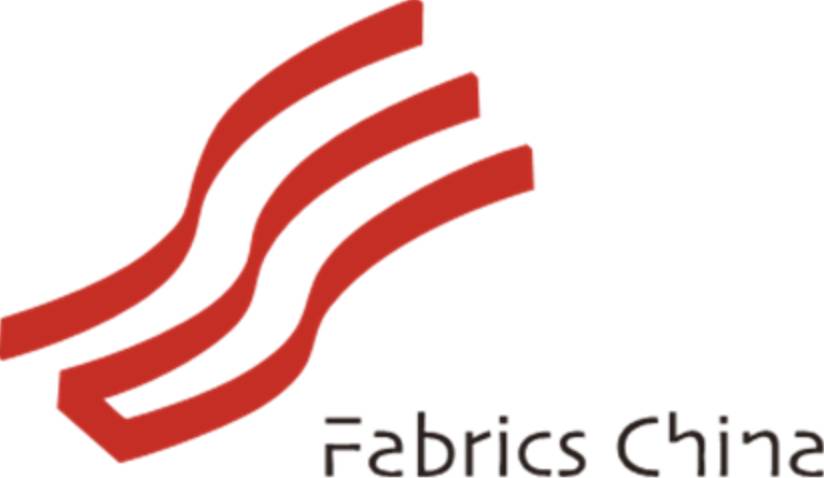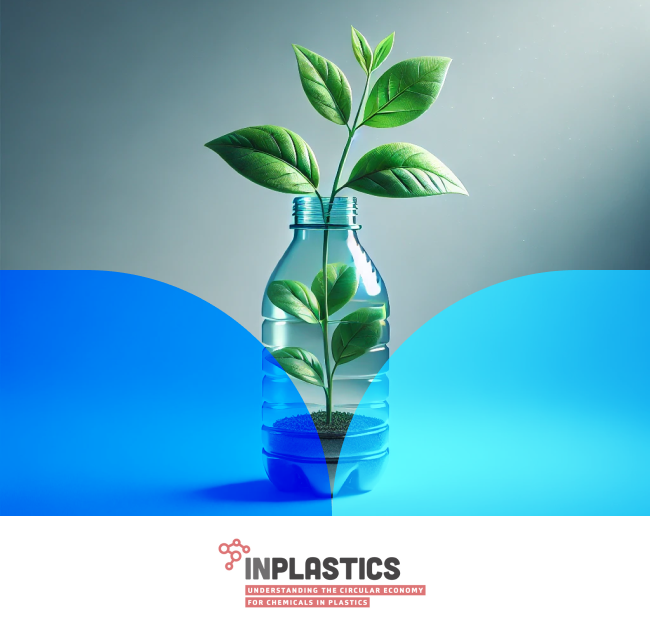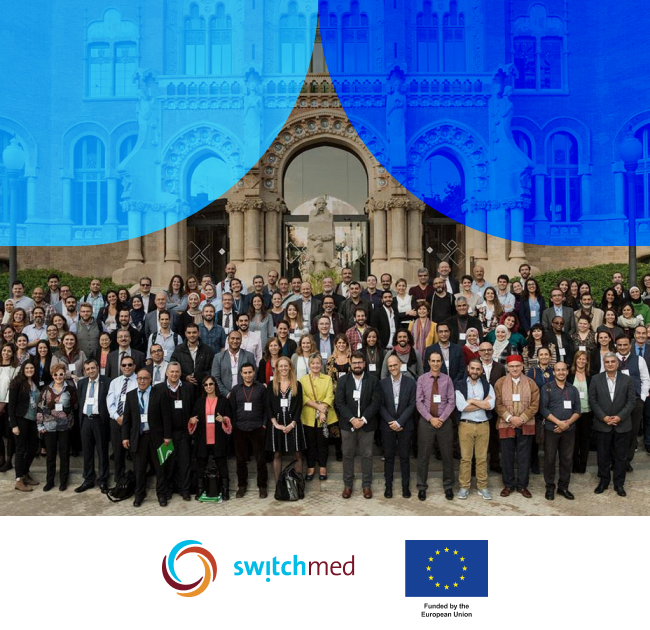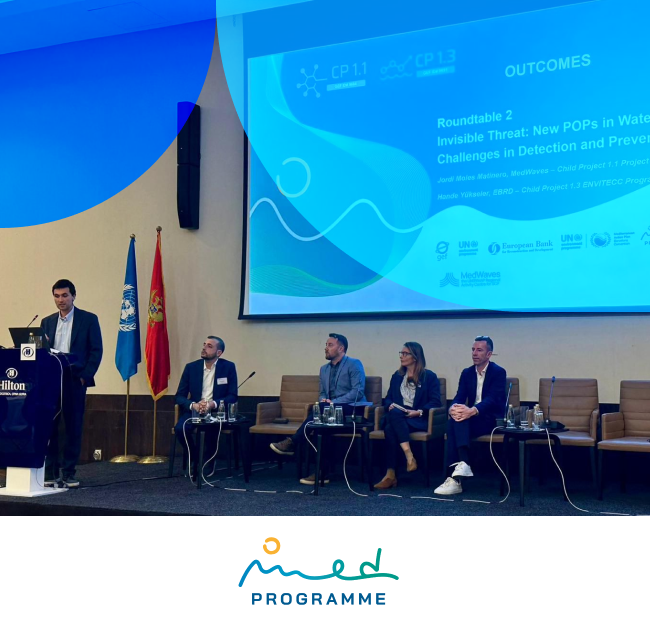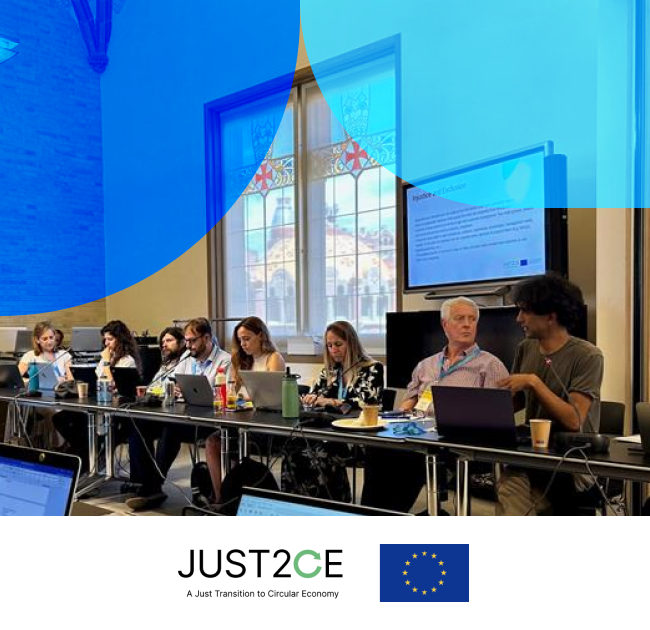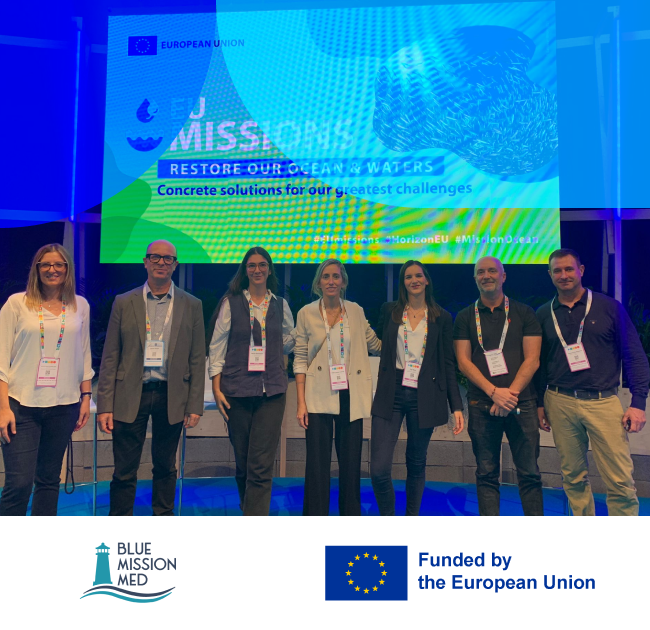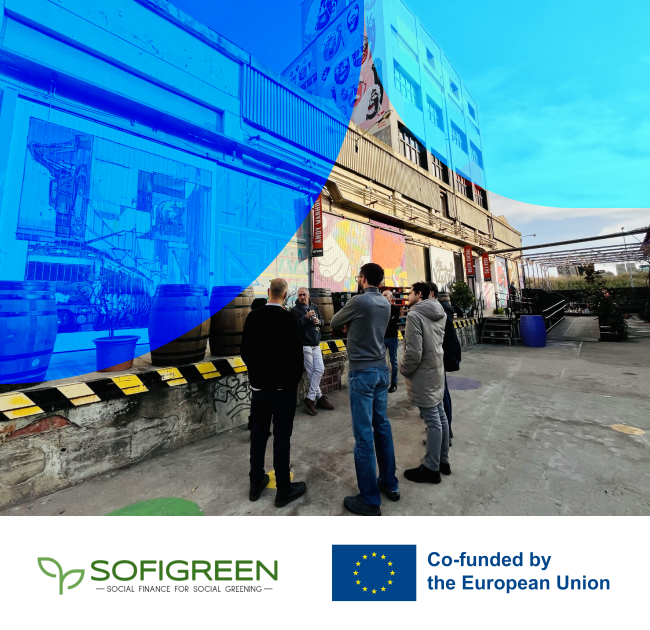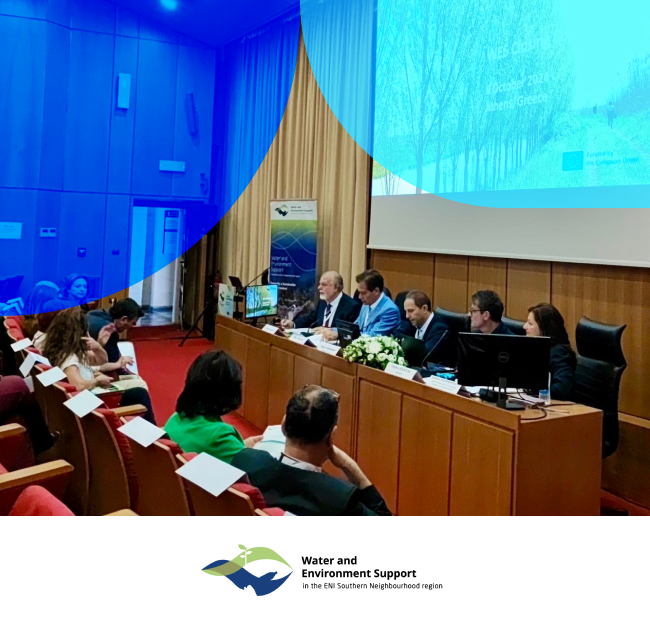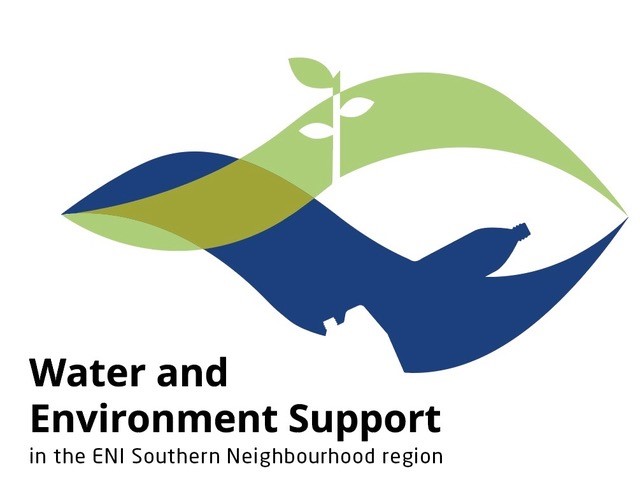Transitions to CIRCULAR economy practices in TEXTILE and apparel MSMEs along the lifecycle in Huzhou and Shaoxing
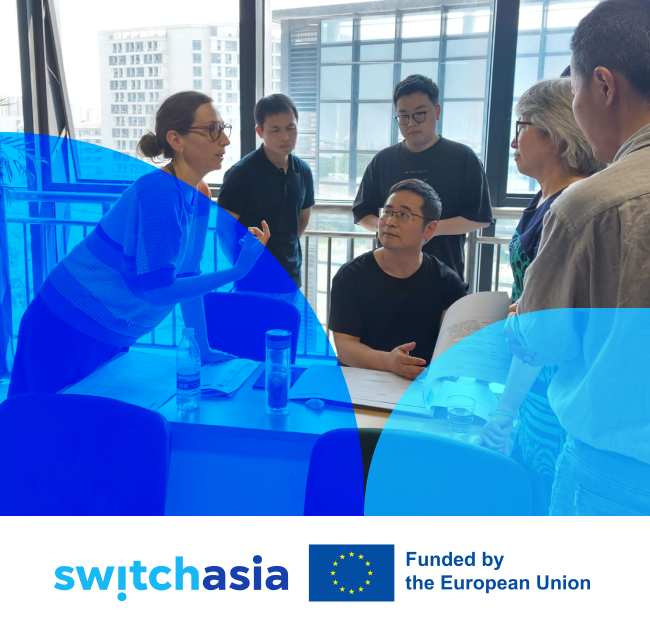
2022-2025
Completed ProjectsTransitions to CIRCULAR economy practices in TEXTILE and apparel MSMEs along the lifecycle in Huzhou and Shaoxing is a project that draws on the foundation built from successful sustainable development in the Mediterranean. Sharing knowledge and practices, support is delivered to facilitate the transition to circular economy practices in the textile and fashion industry in Huzhou City and Shaoxing City, China by 2025.
Circular economyImagine if over half of the world’s fibre was produced in a circular economic model that favoured sustainable consumption and production (SCP). The impact this would have on the health of people and the planet is massive….and inspiring. Drawing on the success experienced in the Mediterranean, MedWaves is sending a ripple of positive momentum to new parts of the world.
SwitchAsia targets the largest global textile and apparel producer in the world, exporter of over one third of all textile and apparel export: China. The activities focus on the central concentration for the textile industry: Huzhou and Shaoxing cities located in the Jiangsu and Zhejiang provinces.
Due to energy-intensive textile industrial practices, these cities exceed the total energy consumption expected for the population. The wastewater discharged from production facilities in Shaoxing, host to only 8% of the province’s population, accounts for 62% of the total industry discharged wastewater in Zhejiang. Despite this overflow, less than 1% is recycled or reused.
This is a huge and avoidable environmental burden.
Applying a circular economic model stimulates a transformation capable of addressing pressures on resources and the environment. SwitchAsia facilitates this transition, aiming to realise a circular economy in the textile and fashion industry in Huzhou and Shaoxing by 2025, in line with the Chinese national 14th-Five-Year-Plan and SDG12.2 & SDG12.5. These activities also significantly contribute to the mitigation of climate change at the local level.
OBJECTIVES:
How does the circular economic model apply to the textile and apparel sector in China?
China has committed to becoming carbon neutral by 2060, while maintaining quality growth in its economy. As the largest global producer of textile and apparel, there is a need to stimulate a feasible, yet ambitious transition into how things are produced and consumed.
SwitchAsia targets five key interventions to stimulate a transition to a circular economy in the Huzhou and Shaoxing textile and fashion industry:
- Demonstration: The most compelling way to inspire change is to show what is possible. Establishing resource efficiency potential will help to gain stakeholder commitment;
- Technical Capacity Building: It is important to ensure that the industries engaged are able to understand the circular economic model, and apply its methodologies successfully;
- Introducing open innovation processes to provide circular solutions;
- Establishing an enabling policy environment: Success in the private sector is inextricably linked to the public sector, and therefore requires a supportive framework that values, supports and rewards circular economic principles; and
- Access to finance: The ability to tap into financial resources at every step of the transition is key to a positive transformation.
SwitchAsia prioritises guidelines, such as: reducing water and energy consumption throughout the products’ lifecycle and post-harvesting activities; implementing resource efficiency measures and promoting use of certification for products; supporting MSMEs to integrate EU and international standards for products; and promoting measures to ensure that products are designed for circularity.
Partnering with ICLEI supports high-level local policy that an strengthen the development of the cities’ climate actions through mitigation of embedded carbon in textile value chains (manufacturing phase emissions and municipal waste management). Experiences will be disseminated to other ICLEI Chinese member cities that hold textile hubs for potential replication.
The path of realising this goal is innovation. SwitchAsia focuses on delivering advanced technologies for recycled fibres and bio-based chemical fibres. These are harmonised with the standardization processes as major policy instrument to transform from linear to circular production for textile MSMEs in China.
In addition, SwitchMed values and supports the development of innovative ideas to support MSMEs resolve their circular economy challenges. Young entrepreneurs have a lot to offer as potential providers of solutions. Drawing on the success of parallel incubation programmes in the EU funded projects SwitchMed, STANDUP! and Interreg Europe (CircE), SwitchAsia is able to enhance resources, build capacity and support policy support interventions.
Women are an essential part of the SwitchAsia vision. Specific efforts are devoted to engaging them in clean production development and eco-design through training to promote the awareness and ability to adapt to the circular economy in the textile and apparel industry.
The circular textile industry action roadmaps in Huzhou and Shaoxing co-developed with European peer cities will respond positively to the call from EU Circular Economy Action Plan, upcoming EU Strategy for Textiles, and EU-China MOU on Circular Economy Cooperation. The subnational government efforts will further be linked to the European Circular Cities Declaration (making references to EU SCP Action Plan priority sectors) and the Green Circular Cities Coalition in East Asia as well as ICLEI Circulars city network for regional and global replication.
WHO WILL BENEFIT:
In addition to supporting healthier environments free from toxic wastes, SwitchAsia also benefits people. In Huzhou and Shaoxing, more than half of the people producing textile and apparel MSMEs are women. The products are exported to several million consumers in China and to other countries and regions (European Union). The SwitchAsia project engages impact investors and development financing institutions, such as China Construction Bank to support entrepreneurs, and textile associations and research institutions such as China National Textile and Apparel Council, China Association of Circular Economy, China Textiles Development Center in Beijing, and China National Institute of Standardization.
MedWaves’s role:
When we act together, we change together.
MedWaves: converging synergies for planetary transformation.
MedWaves supports the SwitchAsia project by leading the capacity building and technical assistance components. These activities will improve MSMEs performance in Huzhou and Shaoxing, as well as the local and national authorities’ capability to detect and improve resource efficiency in textile manufacturing process and activities.
MedWaves will participate through four main activities:
- Development of best practices for resource efficient textile manufacturing: Based on similar activities performed by MedWaves within SwitchMed, and aligned with the technical report Circular Business Opportunities: How Can Business Lead the Way to Sustainable Fashion, this activity will identify best practices and circular strategies that are based on analysis of value chains and life cycles of products in the two target cities. This data will be used to develop a set of practical tools guiding implement actions leading to more sustainable production patterns. The businesses will also receive support through www.TheSwitchers.org, receiving the MedWaves’s Ecodesign Tool.
- Training the trainers: Drawing on the MedWaves expert network, two international trainers will deliver methodologies to key sector stakeholders and business support organisations in order to foster a healthy circular local business ecosystem. Three day workshops will take place in each city to provide this direct training, training manual and implementation guidelines.
- Pilot MSMEs: Eight pilot cases will be developed to demonstrate resource efficiency measures, selected through a competition-based process. The project will reach out to and engage 150 MSMEs’ managers and decision makers, offering training and technical support. Five workshops (three days each) will be delivered in the two target cities. Each workshop will be facilitated by two certified trainers. Once the training is finalised, an internal call for applications will be launched to select the eight most promising business units, which will be supported with an intensive mentoring and technical assistance programme. Eight MSMEs will be supported through mentoring and external technical assistance to plan and implement resource efficient and circular economy measures. Sustainability strategies will be applied following the outlined methodology and monitoring and evaluation tools used to capitalise on the eight pilots, unfolding their demonstration and replication potential.
- Replication: The success of the eight pilot projects will be used to leverage interest and engagement in other key facilities, liaising with local authorities and sector associations. A systematisation research will be undertaken to produce a report and factsheets on the implemented pilot. Dissemination will be carried to key targets, both public and private, through regular meetings and the organisation of six informational events. The project will offer support to 10 additional business units, via mentoring and coaching (160 hours / pilot), applying MedWaves’ methodology to develop circular economy roadmaps and facilitate business development and access to investments. Networking and partnership strategies will be envisaged to implement the replication activity with the cooperation of public and private stakeholders.
Projets connexes
INPLASTICS Toxic Chemicals
INPLASTICS offers a set of interactive, innovative education and communication tools to raise awareness regarding toxic additives. The programme builds capacity throughout the region to address the invisible aspects of plastic pollution so that we can all be part of the solution.
LIRE PLUSSwitchMed (2nd phase) Circular economy
The EU-funded SwitchMed programme promotes a circular economy in the southern Mediterranean by changing the way goods and services are produced and consumed. In order to achieve this, SwitchMed provides tools and services directly to the private sector, supports an enabling policy environment and facilitates exchange of information among partners and key stakeholders.
LIRE PLUSThe Mediterranean Sea Programme: Enhancing Environmental Security (MedProgramme) Toxic Chemicals
The Mediterranean Sea Programme: Enhancing Environmental Security (MedProgramme) aims to improve the health and livelihoods of coastal populations in the Mediterranean region by reducing major transboundary environmental stresses and strengthening climate resilience and water security.
LIRE PLUSJUST2CE, a just transition to circular economy Circular economy
JUST2CE promotes a global transition to a circular economy by supporting a more democratic and participatory mechanism of governance over the productive processes that underpin design and management of technologies.
LIRE PLUSBlueMissionMed: Supporting The Mediterranean Sea Basin for the Implementation of the EU Mission Restore Our Ocean And Waters Marine Litter
BlueMissionMed inspires, informs, assesses, mobilises, connects and empowers all the actors that can take a role in preventing and eliminating pollution in the Mediterranean sea and waters.
LIRE PLUSSOFIGREEN: Social Finance for Social Greening Compétitivité verte
Social Finance for Social Greening (SOFIGREEN) is a European project supporting small-to-medium sized enterprises (SMEs) to be leaders in the green social economy. Through transnational cooperation, increased awareness and access to financing instruments, SOFIGREEN establishes important keys to success, such as investment readiness and multi-level (local, regional, cross-border) collaborations.
LIRE PLUSWater and Environment Support (WES) in the Mediterranean Marine Litter
The Water and Environment Support (WES) in the ENI Neighborhood South Region project implements an integrated approach to pollution reduction and prevention in order to protect natural resources and improve the management of scarce water resources in the Mediterranean.
LIRE PLUSWater and Environment Support (WES) in the Mediterranean
The Water and Environment Support (WES) in the ENI Neighborhood South Region project implements an integrated approach to pollution reduction and prevention in order to protect natural resources and improve the management of scarce water resources in the Mediterranean.
LIRE PLUSWater and Environment Support (WES) in the Mediterranean
The Water and Environment Support (WES) in the ENI Neighborhood South Region project implements an integrated approach to pollution reduction and prevention in order to protect natural resources and improve the management of scarce water resources in the Mediterranean.
LIRE PLUS




